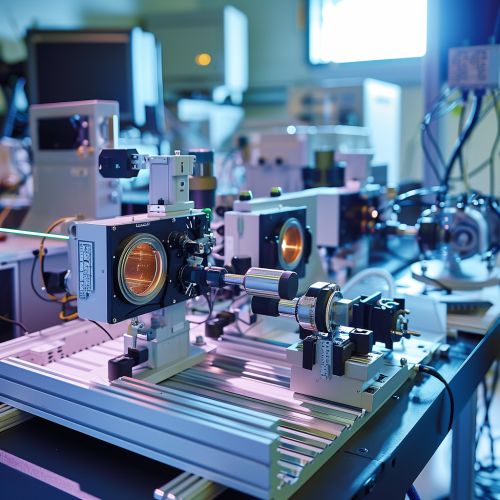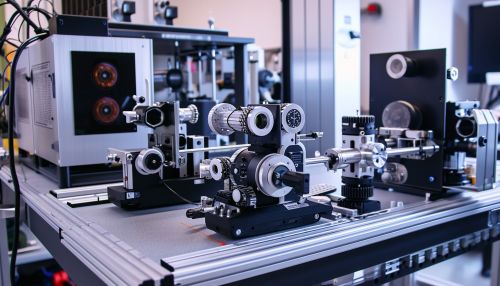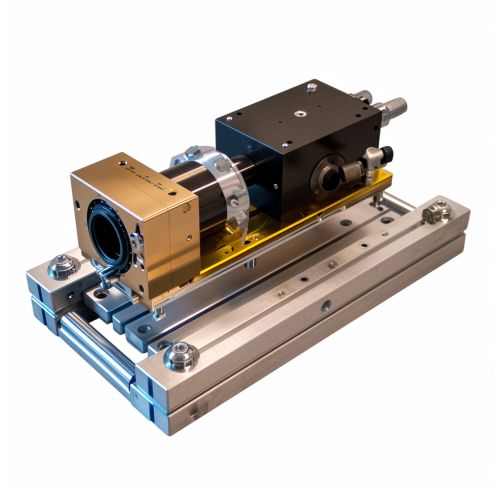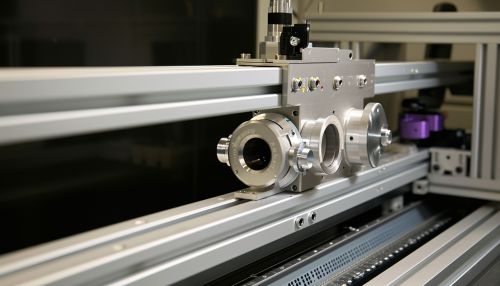Spectral phase interferometry for direct electric-field reconstruction
Introduction
Spectral phase interferometry for direct electric-field reconstruction (SPIDER) is a technique used in the field of ultrafast laser physics to characterize the electric field of an ultrashort laser pulse directly in the time domain. This method is particularly useful in the study of femtosecond and attosecond pulses, where traditional methods of pulse characterization are insufficient due to the extremely short duration of these pulses.


Principle of Operation
The SPIDER technique is based on the principle of spectral phase interferometry. In this method, the laser pulse to be characterized is split into two replicas: a test pulse and a reference pulse. The test pulse is frequency-shifted by an amount Δω using a nonlinear optical process, and then interfered with the reference pulse in a spectrometer. The resulting spectral interference pattern, or interferogram, contains information about the spectral phase difference between the test and reference pulses, which can be used to reconstruct the electric field of the original pulse.
Mathematical Description
The mathematical description of the SPIDER technique involves several steps. First, the electric field of the laser pulse is represented as a complex function of time, E(t), which can be written in terms of its amplitude A(t) and phase φ(t) as E(t) = A(t)exp(iφ(t)). The frequency-shifted test pulse is then represented as E(t-τ)exp(iΔωt), where τ is the delay between the test and reference pulses.
The spectral interference pattern is obtained by taking the Fourier transform of the sum of the test and reference pulses, which yields a complex function of frequency, S(ω). The phase of this function, Φ(ω), is related to the spectral phase difference between the test and reference pulses, and can be extracted from the interferogram by a process known as phase unwrapping.
Finally, the electric field of the original pulse can be reconstructed by taking the inverse Fourier transform of A(ω)exp(iΦ(ω)), where A(ω) is the amplitude spectrum obtained from the interferogram.
Experimental Setup
The experimental setup for a SPIDER system typically consists of several key components. These include a beam splitter to divide the incoming laser pulse into the test and reference pulses, a nonlinear medium to frequency-shift the test pulse, a delay line to control the timing between the test and reference pulses, and a spectrometer to record the interferogram.


Applications
The SPIDER technique has found wide application in the field of ultrafast laser physics. It is used to characterize the electric field of femtosecond and attosecond pulses, which are used in a variety of research areas including ultrafast spectroscopy, attosecond science, and high harmonic generation. SPIDER is also used in the development and testing of ultrafast laser systems, where accurate pulse characterization is crucial for optimizing system performance.
Advantages and Limitations
One of the main advantages of the SPIDER technique is its ability to provide direct, time-domain characterization of ultrashort laser pulses. This is in contrast to traditional methods of pulse characterization, which typically involve indirect, frequency-domain measurements. SPIDER is also relatively simple to implement experimentally, and does not require complex data processing or iterative algorithms to reconstruct the electric field.
However, SPIDER also has several limitations. The technique requires a spectrometer with a large spectral bandwidth to capture the entire interferogram, which can be challenging for pulses with a broad spectrum. SPIDER is also sensitive to noise and phase errors in the interferogram, which can lead to inaccuracies in the reconstructed electric field.
